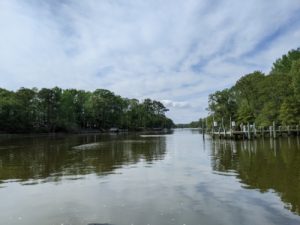
One of the great things about living on the coast is the assortment of waterways we can explore. The weather was so nice and warm (85 degrees) this afternoon that we couldn’t resist going out for a quick ride on the boat after work.
We launched out of White Horse Park adjacent to Ocean Pines, MD and headed up river on the St. Martin River. We explored the Shingle Landing Prong and the Bishopville Prong. The beautiful waterways were speckled with equally beautiful homes.
The St. Martin River is a tributary of Isle of Wight Bay and is approximately 4.4 miles longs. A short river, the St. Martin broadens rapidly to enter the Isle of Wight Bay where the bay is crossed by MD Route 90. Its two main tributaries are the Shingle Landing Prong and the Bishopville Prong.
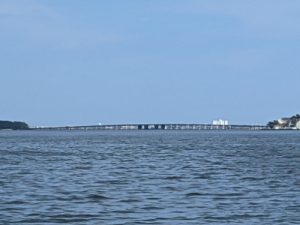
When we headed back down river we didn’t go as far as the Route 90 bridge, but we did tuck in and explore a little bit of Ocean Pines.
This was the first boat ride for our black lab, Maggie, and our Jack Russell Terrier, Sage. Maggie didn’t do too bad, but Sage was not happy. Hopefully they will start to feel comfortable on the boat the more we take them out on it.
The White Horse boat launch was truck and trailer friendly with a lot of room and parking. There were two launch pads with nice docks.
I can’t wait to go out again on an afternoon ride and explore more!
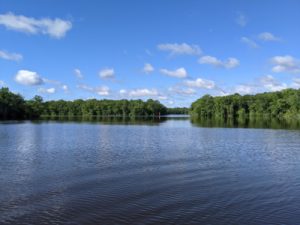
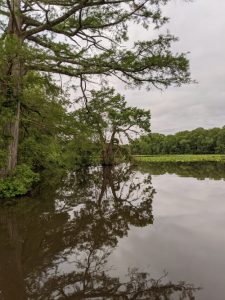 We went out on the Pocomoke River at 5:30a launching out of Snow Hill, MD. The morning was cloudy and cool. We just had two days of non-stop rain and some of the river was windy, so we tucked into where it was calm.
We went out on the Pocomoke River at 5:30a launching out of Snow Hill, MD. The morning was cloudy and cool. We just had two days of non-stop rain and some of the river was windy, so we tucked into where it was calm.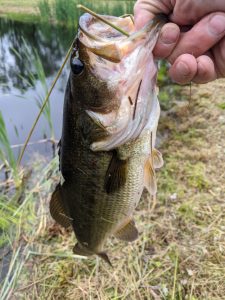
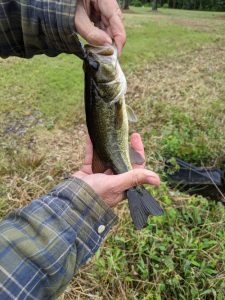
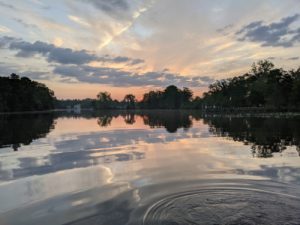
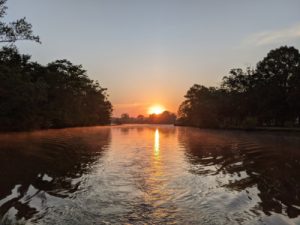
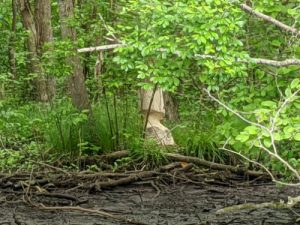
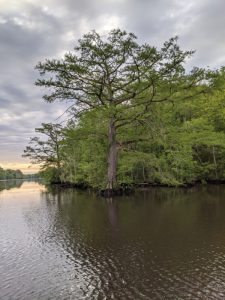
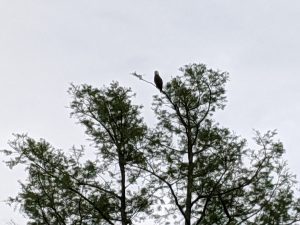
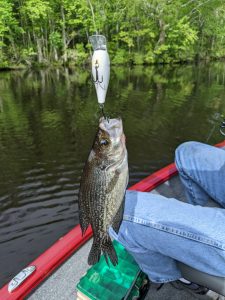
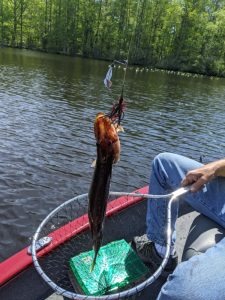
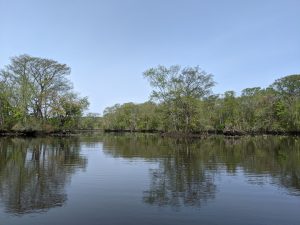 We launched out of Snow Hill, MD onto the Pocomoke River. The tide was low and it was amazing to see how low the water line was. I’d say at least four feet. We fished several banks and one produced a large mouth bass that John caught with a spinner bait. Along the way we encountered several blue herons and two beaver.
We launched out of Snow Hill, MD onto the Pocomoke River. The tide was low and it was amazing to see how low the water line was. I’d say at least four feet. We fished several banks and one produced a large mouth bass that John caught with a spinner bait. Along the way we encountered several blue herons and two beaver.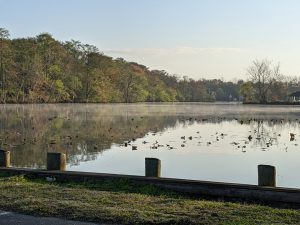 Our next trip was on the Pocomoke River out of Snow Hill, MD. Snow Hill was founded in 1686 in Somerset County by English settlers and was made a port of entry in 1694. In 1742 Worcester County was carved out of the eastern half of Old Somerset County and Snow Hill was centrally located in the new county and at the head of navigation on the Pocomoke River.
Our next trip was on the Pocomoke River out of Snow Hill, MD. Snow Hill was founded in 1686 in Somerset County by English settlers and was made a port of entry in 1694. In 1742 Worcester County was carved out of the eastern half of Old Somerset County and Snow Hill was centrally located in the new county and at the head of navigation on the Pocomoke River.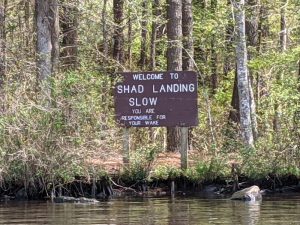 As we headed up river towards the dock we came upon Shad Landing and turned in for a look around. I didn’t know you could access this Pocomoke River State Park from the water. What an amazing area. There was camping and boat slips and a winding narrow waterway that took you back to the river. Click on the
As we headed up river towards the dock we came upon Shad Landing and turned in for a look around. I didn’t know you could access this Pocomoke River State Park from the water. What an amazing area. There was camping and boat slips and a winding narrow waterway that took you back to the river. Click on the